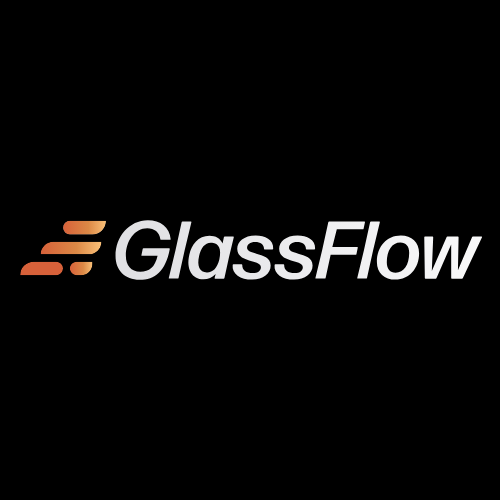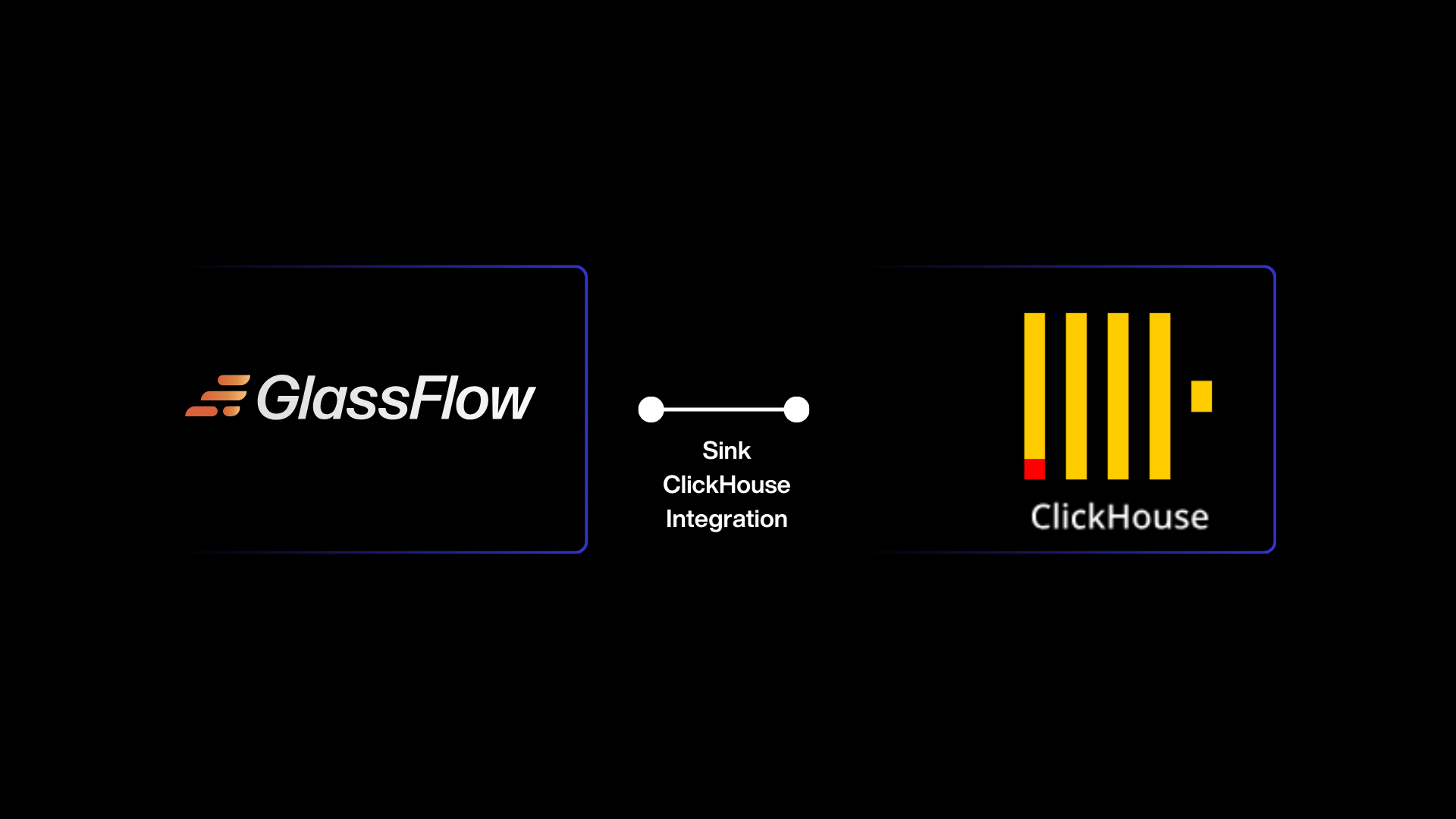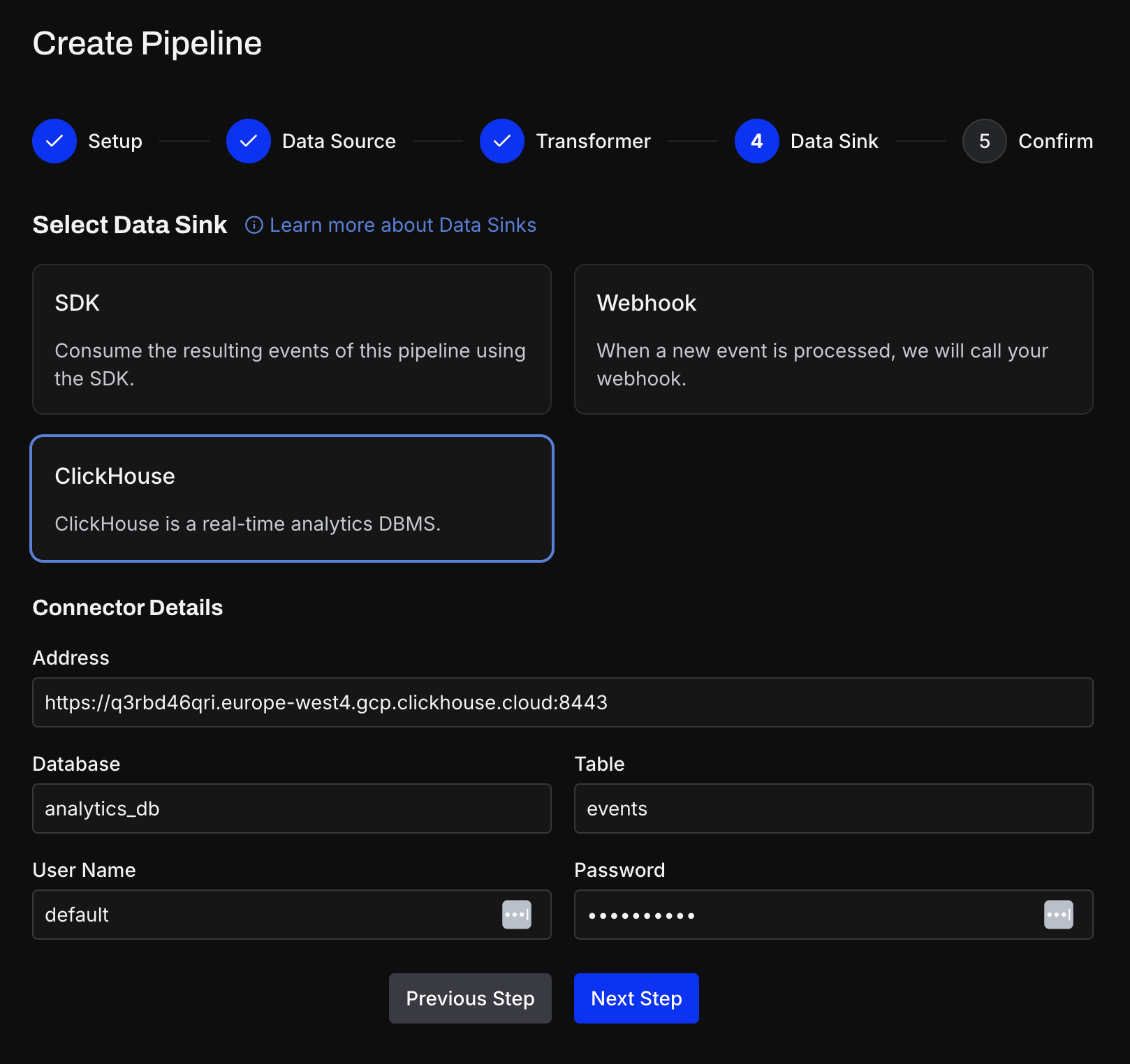Real-time event streaming and transformation for ClickHouse
 GlassFlow
GlassFlow
Real-time analytics and fast decision-making are critical to driving business success. With growing data volumes, especially from IoT devices, websites, and user interactions, organizations need tools that allow them to efficiently handle streaming data and derive actionable insights. The integration of GlassFlow and ClickHouse combines powerful real-time data processing and transformation capabilities with a high-performance analytical database, enabling businesses to create real-time data pipelines with ease.
What Problems Does This Integration Solve?
Challenge 1: Real-Time Analytics with Large Data Sets
- Many organizations struggle to process and analyze large amounts of real-time data effectively. Traditional databases often lack the necessary performance to handle real-time workloads at scale. The GlassFlow ClickHouse integration solves this by allowing organizations to stream real-time data directly into ClickHouse, known for its speed and ability to manage large volumes of data in an OLAP setting. This enables faster decision-making based on fresh data.
Challenge 2: Complex Data Transformations
- Before data can be analyzed, it often needs to be transformed. Whether it's cleaning, enriching, or reformatting, these transformations are critical to extracting valuable insights. With GlassFlow, you can build custom transformation logic using Python, making it easy to handle complex operations before storing the data in ClickHouse.
Challenge 3: Scalability and Performance
- As data volumes grow, maintaining performance becomes a challenge. ClickHouse's columnar storage and optimized architecture allow businesses to handle high-throughput, real-time data ingestion without compromising on query performance. Combining this with GlassFlow's serverless architecture means that your pipeline can scale seamlessly without manual intervention.
Real-World Use Cases
1. Real-Time Web Analytics
- Websites generate vast amounts of user interaction data, from clicks to page views and user sessions. By using GlassFlow with ClickHouse, you can process these events in real-time, transform them, and store them in ClickHouse for fast querying. This allows businesses to monitor user behavior, track performance metrics, and optimize user experience instantly.
2. IoT Data Processing
- In IoT applications, data streams in from thousands or even millions of devices, each generating data in real-time. GlassFlow can be used to process and filter these streams, and the ClickHouse integration ensures that data can be quickly queried to detect anomalies, track device health, or perform predictive maintenance.
3. Financial Transaction Monitoring
- In industries like banking and finance, tracking real-time transactions is essential for fraud detection and regulatory compliance. A data pipeline with GlassFlow and ClickHouse allows for fast ingestion and transformation of transaction data, enabling financial institutions to monitor, analyze, and report on transactions in near real-time.
4. Ad Tech and Marketing Campaign Optimization
- Real-time ad targeting and bidding require processing vast amounts of data about user interactions and campaign performance. With GlassFlow handling the data pipeline and ClickHouse providing storage and analytics capabilities, businesses can optimize ad placements and bidding strategies on the fly, based on real-time performance metrics.
Real-Time Data Pipeline Architecture
Building a real-time data pipeline using GlassFlow and ClickHouse can be broken down into a few key components:
Data Sources:
- Real-time data pipelines often start with data from sources such as IoT sensors, user interaction data from websites, financial transactions, or logs from applications. These data sources can include well-known tools like Google Pub/Sub, AWS SQS, etc. Also, capturing changes in relational databases like PostgreSQL or MySQL using GlassFlow connectors. GlassFlow can connect to these data sources through its built-in connectors or by using custom integrations.
Transformation (GlassFlow):
- Once the data is ingested, it often needs to be transformed before it can be analyzed. With GlassFlow, developers can write transformation functions in Python to clean, enrich, and process the data in real-time. This might include operations like filtering, mapping, aggregating, or even applying machine learning models to enhance the data.
Sink (ClickHouse):
- After transformation, the data is sent to ClickHouse, which serves as the high-performance storage engine for real-time querying and analytics. ClickHouse’s columnar storage format ensures that large volumes of data can be queried efficiently, making it ideal for use cases like time-series data, large-scale reporting, and analytics dashboards.
How to connect to ClickHouse
The ClickHouse Sink Connector as a fully managed service allows you to publish events directly to ClickHouse self-hosted or cloud service from your GlassFlow pipelines.

Conclusion
The GlassFlow integration with ClickHouse opens up new possibilities for organizations to build efficient, scalable, and high-performance data pipelines. Whether you’re processing user interactions from a website, IoT device data, or financial transactions, this integration allows you to store and analyze data in real-time with minimal latency.
By combining the strengths of GlassFlow for real-time data transformation and ClickHouse for fast, scalable analytics, you can unlock the full potential of your data. For organizations looking to enhance their real-time analytics capabilities, this integration is a game-changer.
For more details on how to set up the ClickHouse Sink Connector with your pipeline, head over to the GlassFlow documentation.
Subscribe to my newsletter
Read articles from GlassFlow directly inside your inbox. Subscribe to the newsletter, and don't miss out.
Written by
